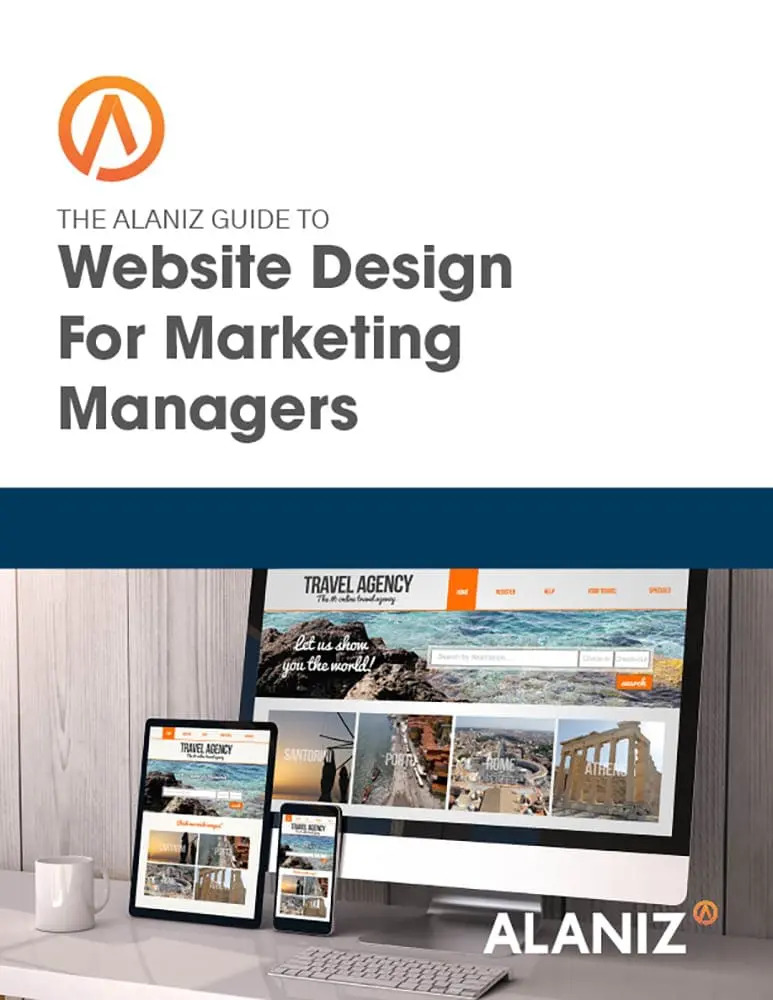This blog post is part of “The Ultimate Guide to Web Development” blog series.
If you’re looking at building a new website for your company, odds are that it’s been awhile since your last web project. Things have changed, of course–business has changed, buyer behavior have changed, search engine criteria have changed, and web design best practices have changed. Here’s an updated list of best practices from some leading web design experts.
Material design: (from @cmswire) Multiple sources predict this Google initiative to take off. Material design is Google’s effort to develop a single underlying system that allows for a unified online experience across platforms and device sizes. Mobile precepts are fundamental, but touch, voice, mouse, and keyboard are all first-class input methods. Bold, graphic and intentional material design creates hierarchy, meaning and focus. It makes flexible use of grid-based layouts, padding, responsive transitions and animations, lighting and shadow depth effects.
Purpose first: (from @SmartInsights) More than ever before, everything in web design, from imagery to navigation, to content, must serve a purpose. Many websites are now decades old, and some have collected huge amounts of clutter along the way. If you are redesigning an existing website, start with a clearout (content audit), and focus on what’s important by mapping key customer journeys. If, on the other hand, you are building a website from scratch, consider wireframes, sitemaps, and top tasks as your starting point. Prioritize clarity over absolute completeness.
Fewer apps, more PWAs: (from @Econsultancy) App-inspired web design got quite a bit of attention in 2016, with the development of several high-profile progressive web apps (PWAs). PWAs take advantage of HTML5 browser technology and advances in JavaScript to cache an ‘app shells’ on the first visit, and allow offline functionality as well as push notifications and a home screen icon.
Data visualization: (from @usersnap) Data and analytics are more important than ever and now big brands are offering their users a chance to see the stats for themselves. Presenting data in visual ways increases user interaction with this information. Particularly useful when it comes to understanding user representation, colorful charts such as the ones you can create using Tableau, are eye-catching and draw user’s attention.
Minimalism Paired With Micro-Interactions (from @keomarketing) It’s all about the mobile experience in 2017 and beyond. Micro-interactions are user enabled interactions that provide control, guidance or rewards, or just impart fun to the experience for the user. Minimalist design means web pages are uncluttered. By combining these semi-flat and minimalist design trends in 2017, websites can deliver great user experiences that take advantage of visitors’ short attention spans and need for instant gratification.
Video (from @techorchestrate) Some 85 percent of users prefer visual content, according to Orchestrate. One of them, of course, is the growing popularity of content videos. The number of views of these videos has sky-rocketed to the staggering figure of over 50 billion per month and continues to grow further. The format has benefited the most from the increase in Internet accessibility and speed and continues to enjoy the popular vote of masses. Web designers would need to continue the drift of integrating videos in the overall designs to procure maximum benefits of this ubiquitous trend.
Illustrations (from @zazzlemedia) Several of the sources here predict the death of stock photography in favor of more personalized, custom visuals. Illustrations are fantastic, versatile mediums for creating visuals which are playful and friendly and add an element of fun to a site. Talented illustrators are able to create illustrations which are full of personality and tailored to match the tone of the brand, something which brands will be striving for more than an ever in an increasingly crowded marketplace. With a unique style of illustration established, brands are then able to roll that out through their entire identity, for use in large header images, custom iconography, and beautifully animated visuals.
Many of these 2017 best practices can fall under the category of user experience–delighting the user with more convenient, authentic communication and interaction. This is understandable, given Google’s relentless efforts to understand, encourage, and reward good user experience as consumers and businesses alike look to the web to find what they want and need.
This blog post is part of “The Ultimate Guide to Web Development” blog series.




